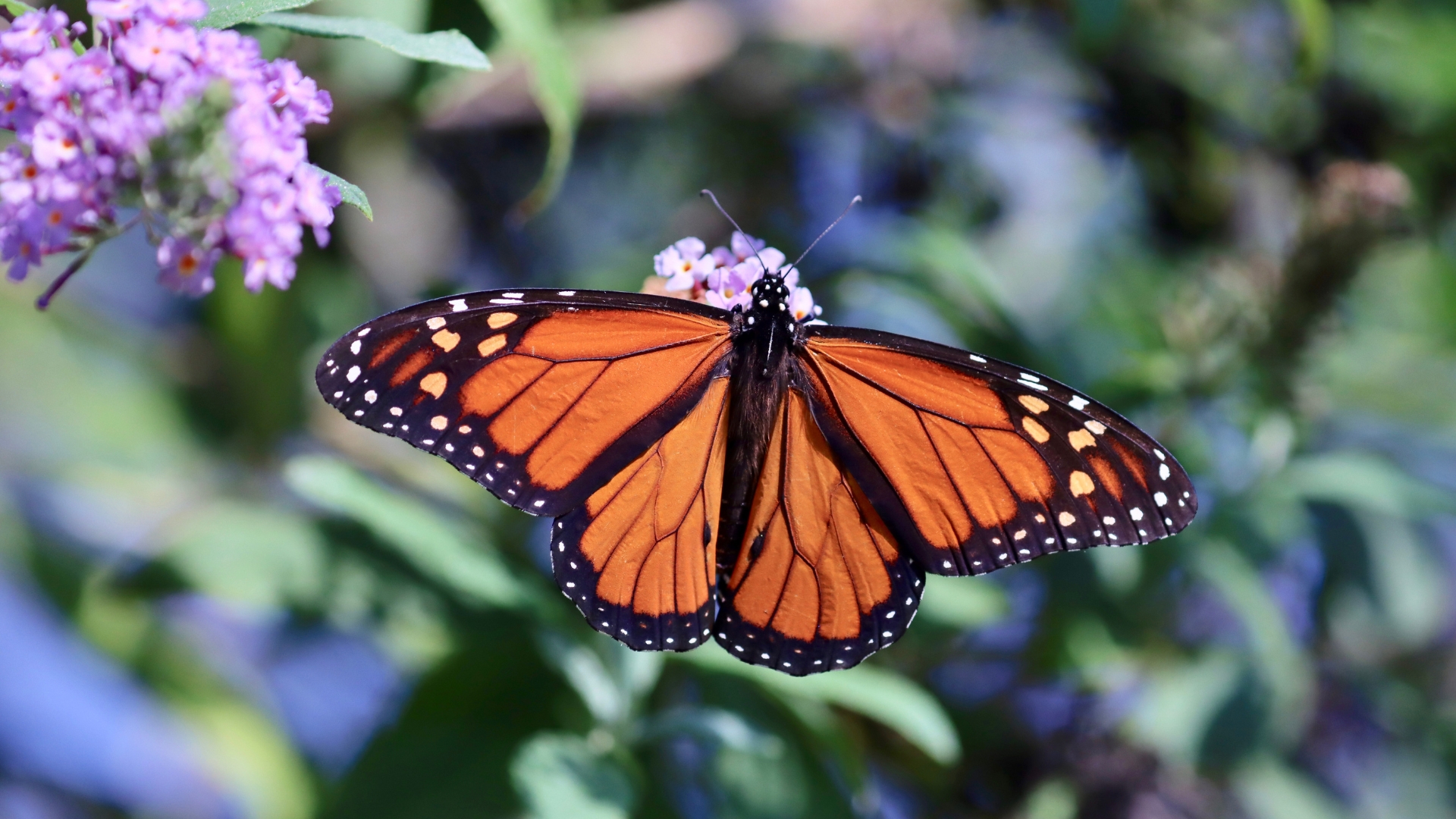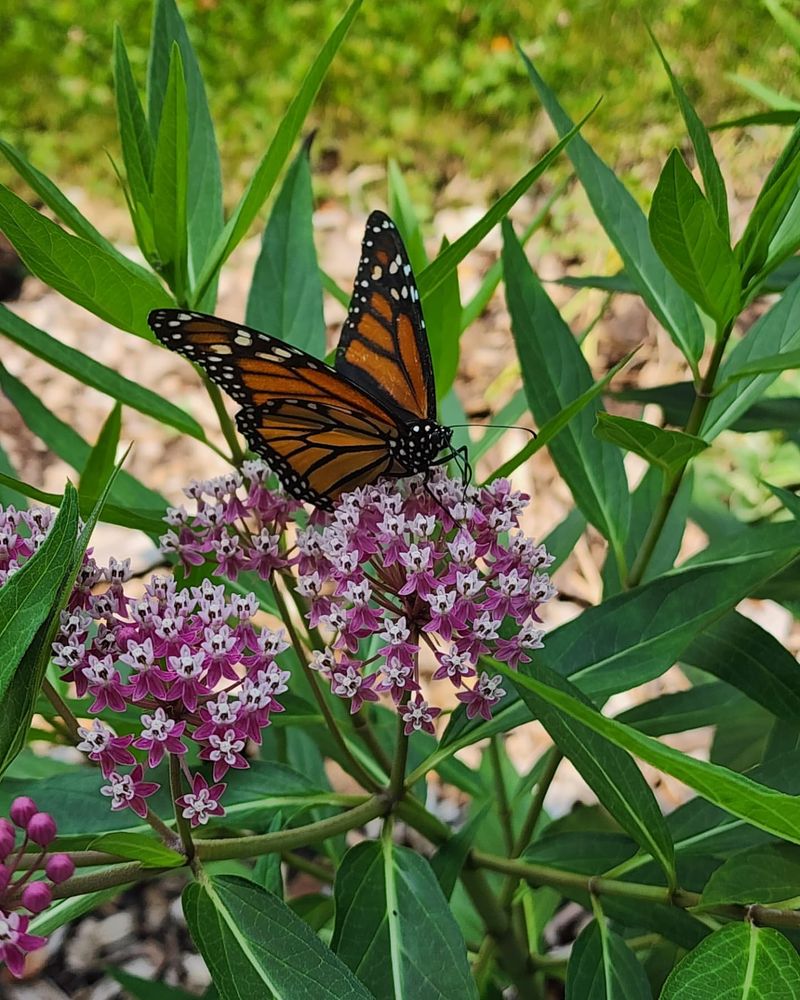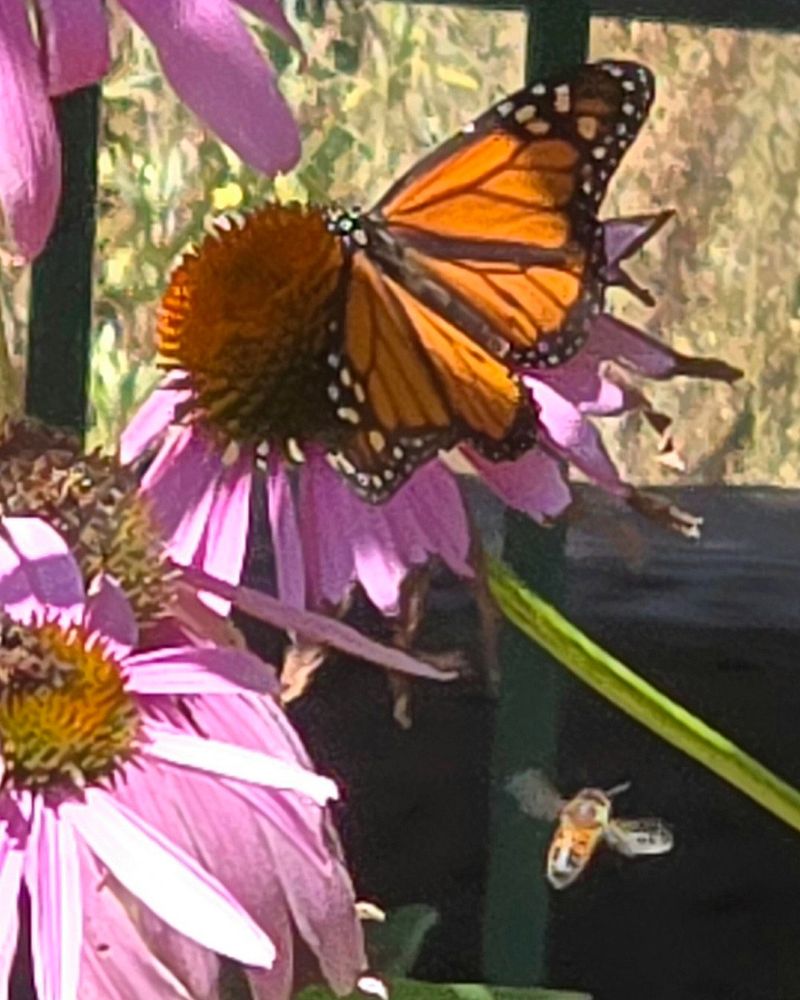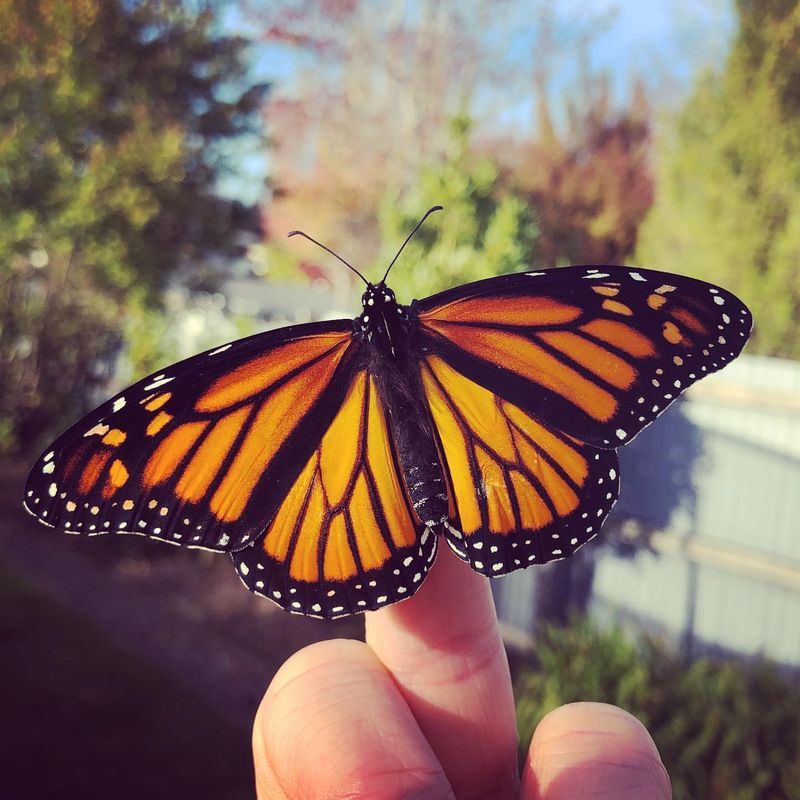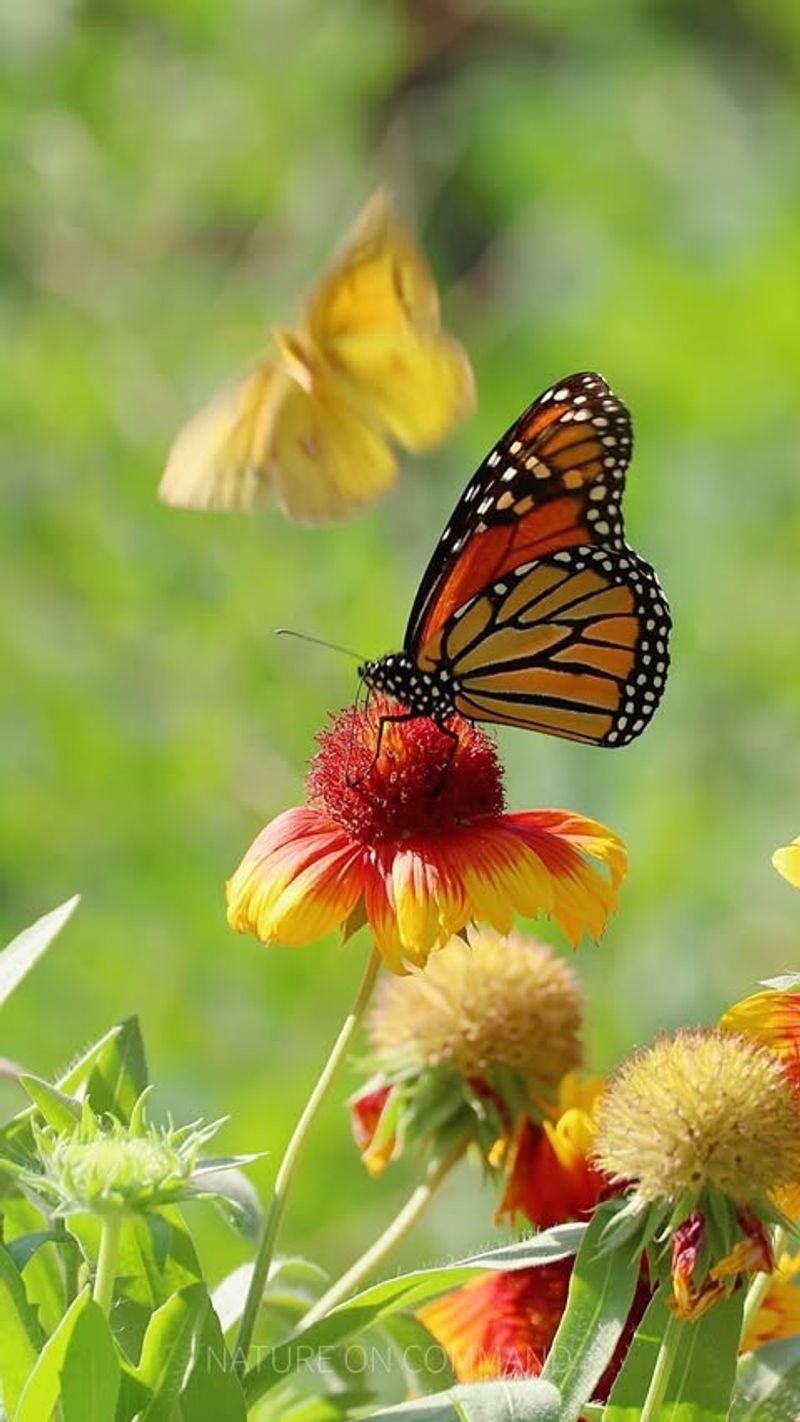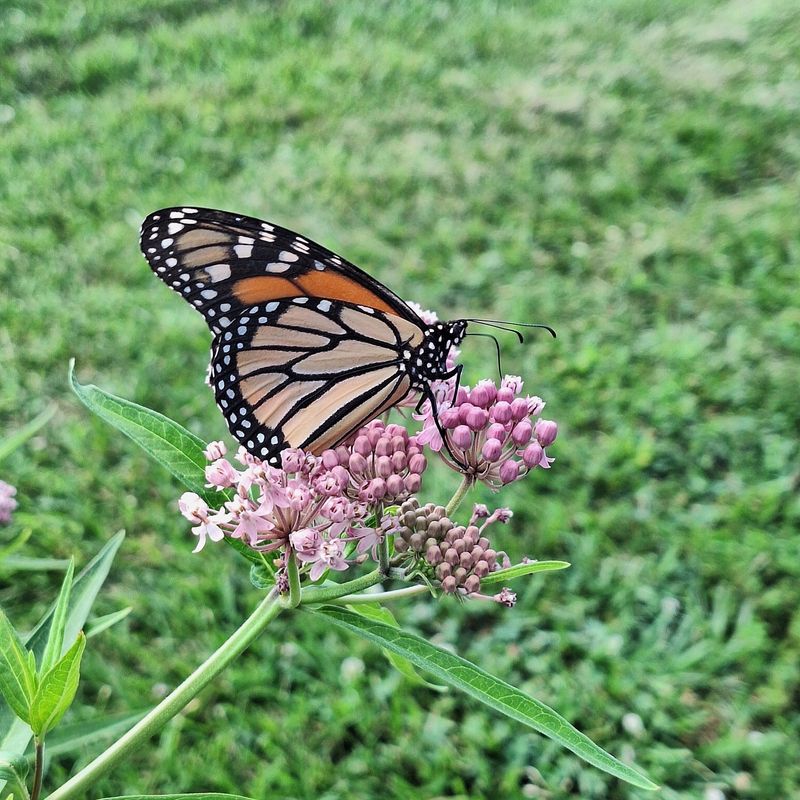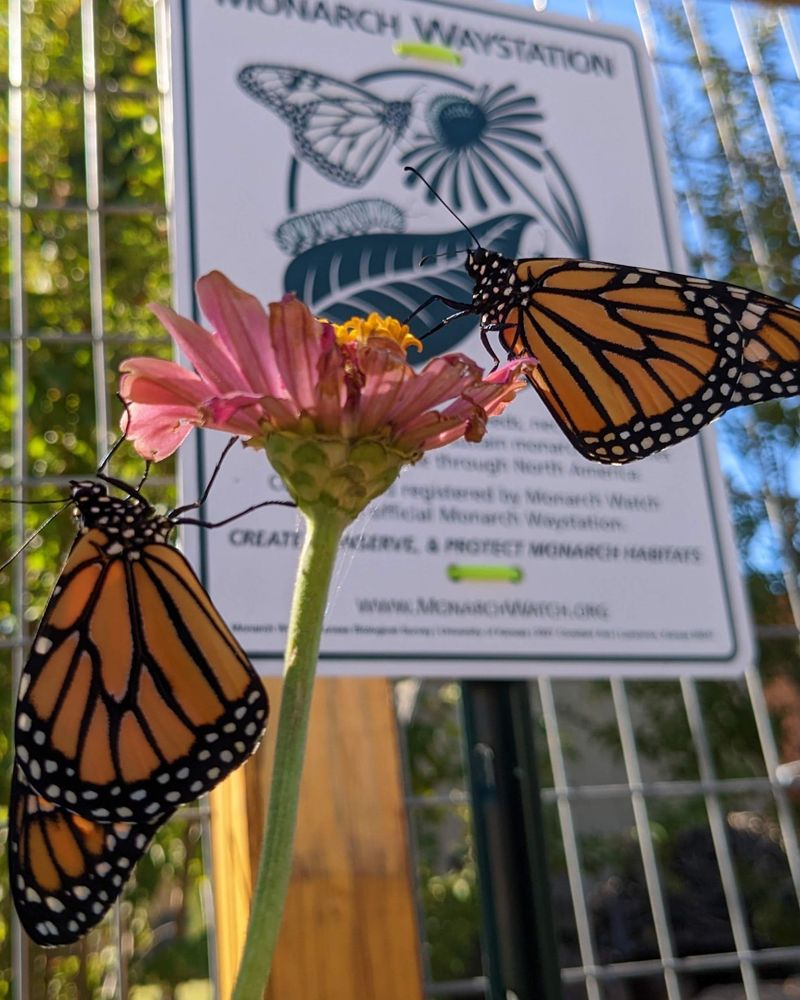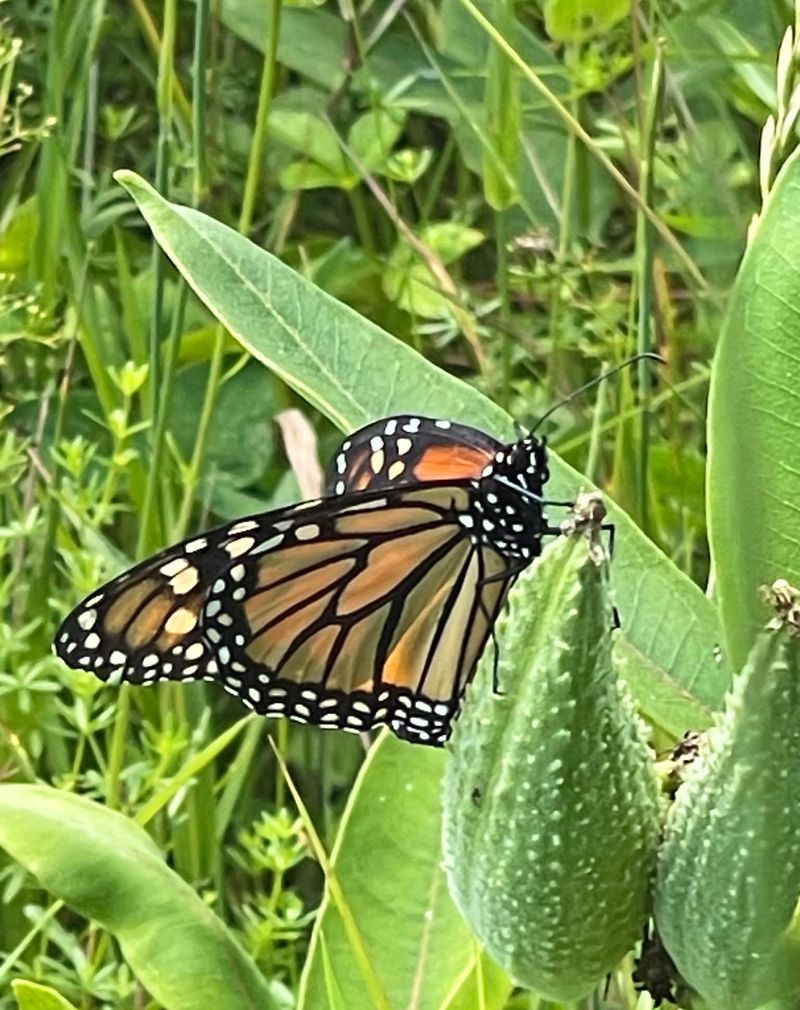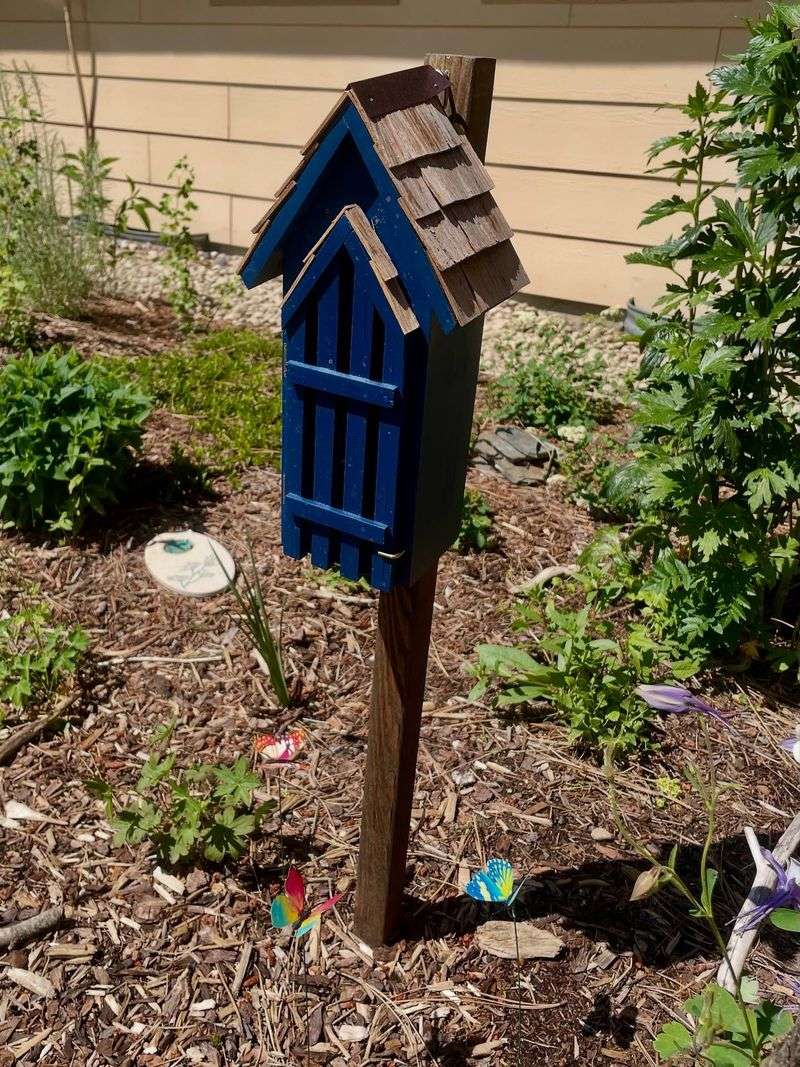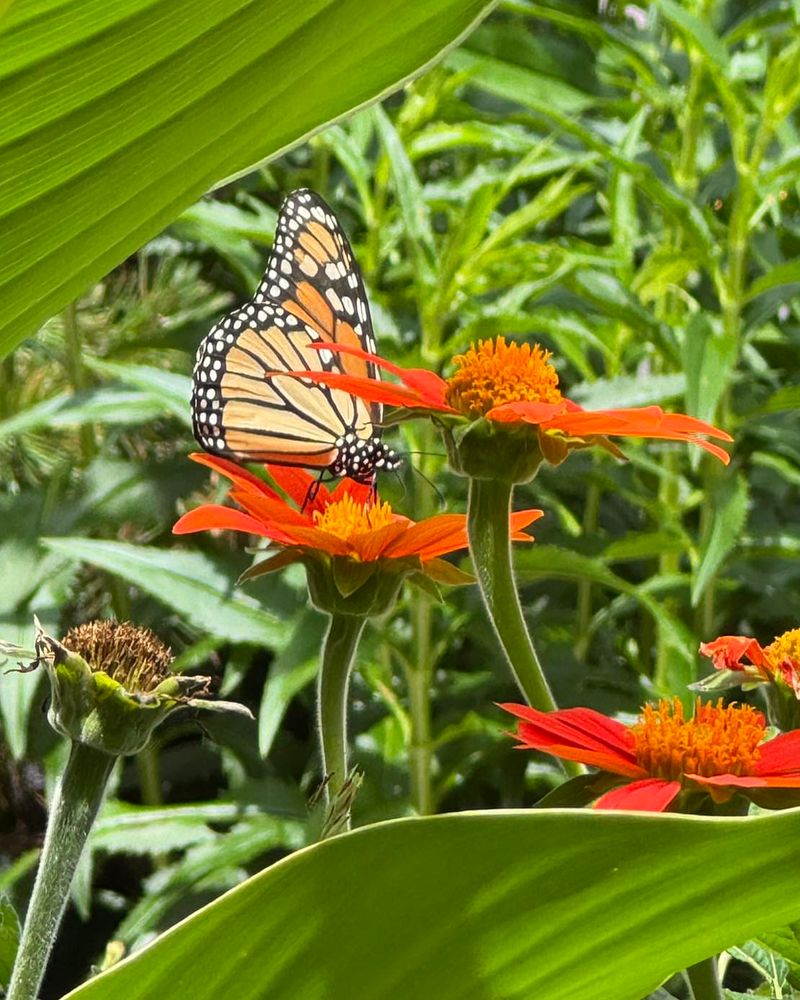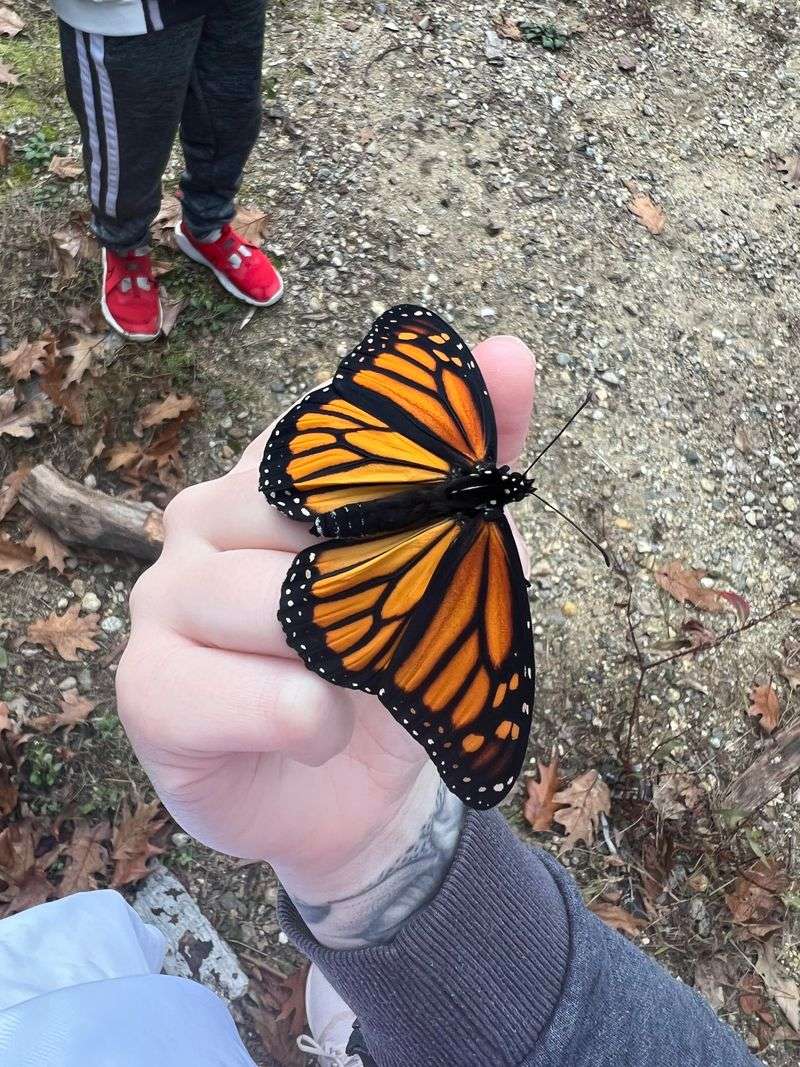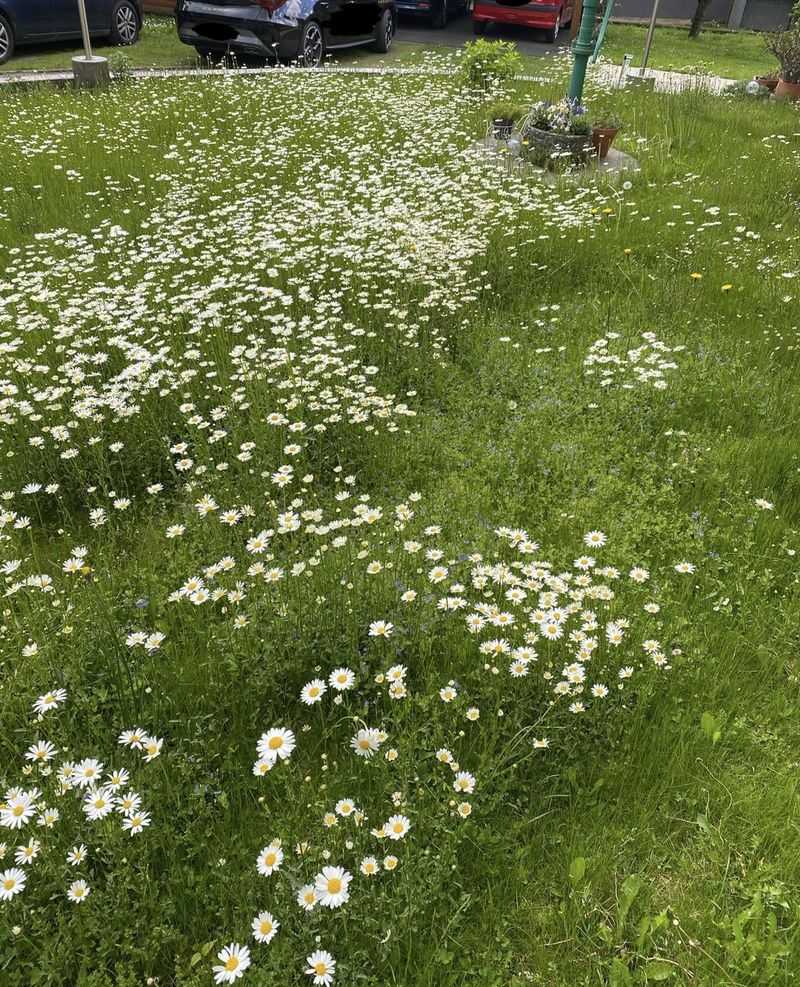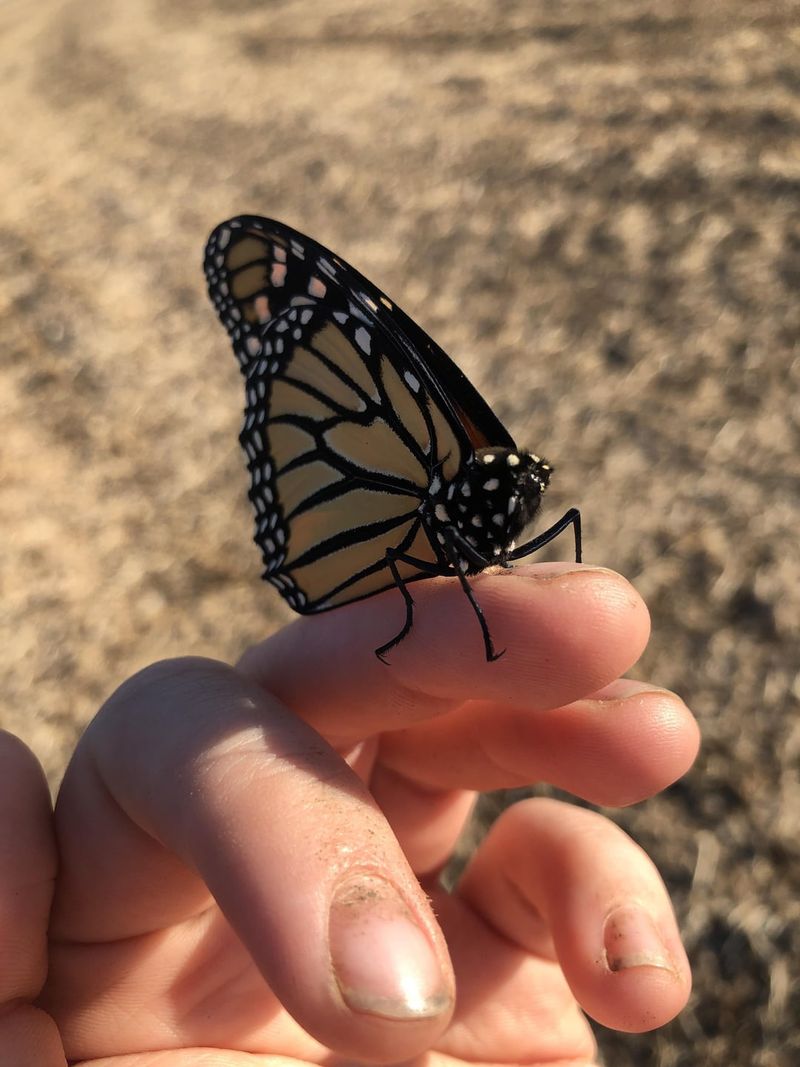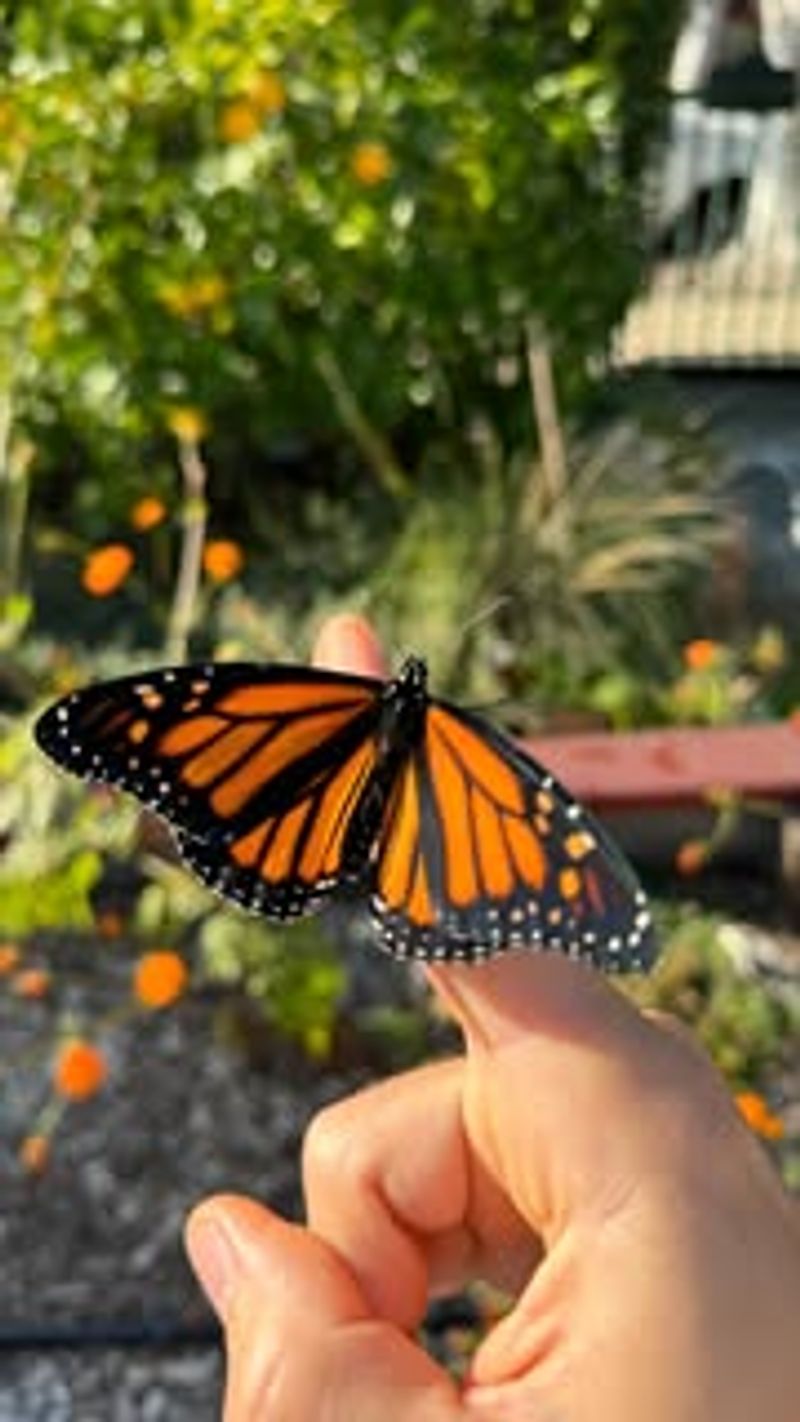By August, monarchs in Minnesota are gearing up for their long journey south—and your garden can give them the boost they need. I’ve seen how just a few thoughtful changes can turn a yard into a monarch magnet.
Late-blooming nectar plants and fresh milkweed can make all the difference this time of year. It’s a simple way to support their migration while filling your garden with fluttering beauty.
Let’s help these iconic butterflies fuel up and fly strong!
1. Plant Late-Blooming Milkweed
Minnesota gardeners can make a huge difference by adding more milkweed now. Female monarchs need these plants to lay eggs, and caterpillars eat nothing else!
Common milkweed, swamp milkweed, and butterfly weed are native Minnesota varieties that provide essential food. Even small patches in urban yards create crucial habitat connections across the state.
2. Create Nectar Stations
Adult monarchs need energy-rich flower nectar to fuel their journey south. Zinnias, coneflowers, and black-eyed Susans provide perfect refueling spots throughout Minnesota gardens.
These late-summer bloomers thrive in our state’s climate and provide essential nutrition. Group flowers in sunny spots where butterflies can easily find them and warm their wings while feeding.
3. Avoid Pesticides
Chemical pesticides can be deadly to monarchs at all life stages. Many Minnesota gardeners don’t realize even organic options can harm these delicate creatures.
Instead, try hand-picking pests or using physical barriers like row covers. Encouraging beneficial insects like ladybugs and lacewings creates a natural balance in your Minnesota landscape without harming monarchs.
4. Provide Mud Puddles
Male monarchs particularly need minerals they can’t get from nectar alone. A shallow dish with wet sand and a pinch of sea salt creates a perfect puddling station in Minnesota yards.
Place these puddles in sunny spots near nectar flowers. During August’s sometimes dry periods in our state, these drinking stations become vital resources that help butterflies prepare for migration.
5. Leave Milkweed Standing
Resist the urge to cut back milkweed plants, even if they look ragged. In Minnesota’s August heat, these plants may still host tiny monarch eggs or caterpillars that are nearly impossible to spot.
The hollow stems also provide winter homes for native bees across our state. Mark milkweed patches with garden stakes as a reminder to leave this critical habitat undisturbed until spring.
6. Monitor for Parasites
Tachinid flies and OE parasites can devastate monarch populations in Minnesota. Check caterpillars for tiny white eggs on their bodies, which indicate parasitic hitchhikers.
Remove affected caterpillars humanely to prevent spread. Minnesota’s monarch monitoring programs welcome volunteer observations – your backyard data helps scientists track these threats across the state’s migration corridors.
7. Register Monarch Waystation
Turn your Minnesota garden into an official Monarch Waystation through Monarch Watch. This program recognizes properties that provide resources for monarchs throughout their lifecycle.
Registration costs just $20 and includes a weatherproof sign. Your Minnesota waystation becomes part of a network of habitats stretching across our state and beyond, creating essential stepping stones for migrating butterflies.
8. Share Milkweed Seeds
August is perfect for collecting milkweed seeds in Minnesota. When pods turn brown and begin to split, carefully harvest the fluffy seeds to share with neighbors and friends.
Community seed swaps happen across our state in late summer. By distributing native milkweed varieties, you’re helping expand monarch habitat throughout Minnesota’s urban and suburban neighborhoods where it’s often lacking.
9. Build Butterfly Shelters
Minnesota’s August storms can damage delicate monarch wings. Simple butterfly houses provide safe havens during bad weather in our state’s unpredictable late summer.
Construct shelters from untreated wood with narrow vertical slats. Place them near nectar gardens but protected from prevailing winds. These structures also make great family projects that connect Minnesota children with conservation efforts.
10. Report Monarch Sightings
Minnesota’s monarch population data helps scientists track migration patterns. The Journey North website makes reporting sightings easy – just note dates, locations, and approximate numbers.
August observations are particularly valuable as our state’s butterflies begin gathering for migration. Even casual backyard watchers across Minnesota can contribute meaningful information that helps researchers understand population trends and migration timing.
11. Create Sunning Spots
Monarchs need to warm their flight muscles before taking wing, especially during Minnesota’s cooler August mornings. Flat rocks or concrete pavers in sunny locations provide perfect basking spots.
Place these warming stations near nectar sources in your Minnesota garden. Butterflies will rest with wings spread to absorb heat, making these spots excellent observation areas for enjoying these magnificent insects before they leave our state.
12. Volunteer for Tagging Programs
Monarch Watch coordinates tagging programs across Minnesota in late August. These tiny stickers placed on butterfly wings help track migration routes and success rates as monarchs journey south.
Many Minnesota nature centers offer training sessions where you’ll learn proper handling techniques. This hands-on citizen science opportunity lets you contribute directly to understanding our state’s monarch population movements and survival rates.
13. Reduce Lawn Mowing
August is a great time to designate “no-mow zones” in Minnesota yards. Letting patches of lawn grow taller creates microhabitats where monarchs can rest and find protection.
Many Minnesota communities now encourage reduced mowing practices. Even small unmown areas in your yard provide safe resting spots for migrating monarchs and allow native wildflowers to bloom, offering additional nectar sources across our state.
14. Host Educational Events
August is ideal for sharing monarch knowledge with Minnesota neighbors. Simple backyard demonstrations about butterfly lifecycles create powerful conservation advocates in our communities.
Invite friends to help with milkweed planting or butterfly counting in your Minnesota garden. Local libraries and community centers often welcome volunteer presenters for monarch education programs that inspire more people across our state to take action.
15. Support Conservation Organizations
Several Minnesota-based organizations work specifically on monarch conservation. The Monarch Joint Venture, headquartered in St. Paul, coordinates efforts across North America.
Monetary donations help fund habitat restoration throughout our state. Volunteer opportunities abound in August, from helping with community plantings to assisting with research in Minnesota’s prairies and parks where monarchs gather before their long journey south.

